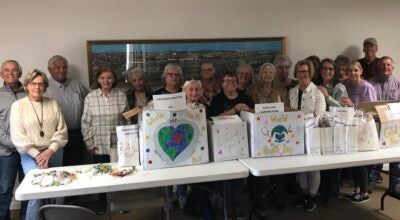Controlled burn not the best idea
Published 7:51 pm Wednesday, October 16, 2013
On Tuesday, thousands of pounds of debris from the former Stewart-King-Mckenzie Building went up in flames.
The thick black smoke billowed into the sky and was visible from miles away.
I first noticed the black cloud as I was driving back from an assignment in Orrville on Alabama 22. From far away, it looked thin and small. As I got closer, it quickly became clear that the cloud was much larger than it initially seemed. After seeing it in person, I was shocked at the size of the fire.
It’s nice to see the once crumbling building slowly disappearing. It was an eyesore and a danger to wandering children, but is burning thousands of pounds of debris really the best way to dispose of the building?
The effects of the burning will most likely be negligible, but there are better ways. The debris was mostly wood.
It’s unlikely that nearby residents will become sick. Glaciers won’t suddenly become liquid because of one fire, but fires do contribute to rising global temperatures — also known as the greenhouse effect.
A National Science Foundation reported showed that all fires combined released an amount equal to 50 percent of all fossil fuels, such as oil.
It’s unrealistic to think that one fire could cause a change in global carbon dioxide levels. There are, however, more environmentally friendly, sustainable ways to dispose of the debris.
City officials could have been creative and recycled some of the debris by using parts to build a city park on the same ground. Perhaps a local industry could have used some of the wood, bricks or cinder blocks in products.
The leftovers could have been taken to a recycling facility. Selma doesn’t have a recycling program, but there are recycling facilities in Montgomery and Birmingham. The city could have loaded trucks with the debris and hauled it away.
At the very least, the debris could have been hauled to a landfill, where the wood would decompose.
The most troubling part of the whole matter is that no one questioned the method.
Cooper Brother Construction President Tom Bolton proposed to do the demolition for free and city council members accepted without question.
Now instead of a crumbling building, the Stewart-King-McKenzie Building consists of ash, cinder blocks and bricks. Instead of a quick one-step cleanup, there is still more work to be done.
The Stewart-King-McKenzie Building is likely not the last crumbling building in Selma that will have to be demolished.
I hope that city officials will brainstorm for better ways of cleaning up our eyesores.
Next time city officials are making a demolition decision, they should think of more sustainable ways to dispose of waste than lighting it up in flames.





